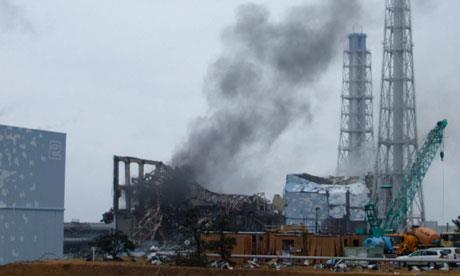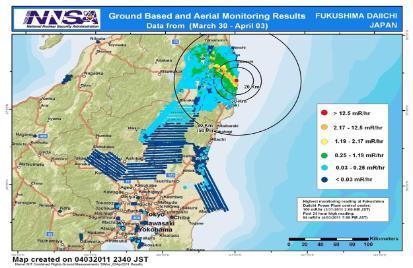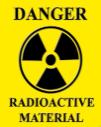Ground breaking new research at the University of Liverpool is developing powerful new sensors for environmental radioactivity that will aid the recovery and regeneration of the post-disaster Fukushima region and pave the way for improved monitoring and control of radioactivity at nuclear sites worldwide.

Research at the University of Liverpool, funded by the Natural Environment Research Council (NERC), is focusing on the importance of being able to detect, measure and monitor nuclear radiation in our environment so that a radioactive substance beneath the ground can be located and monitored to see how it moves with changes in water flow or sediment movement and how the radiation in contaminated soil gets into the food chain via plants and animals.
The continued releases of radioactive material from the earthquake-damaged Fukushima Dai-ichi nuclear power station in Japan, with the risks to water, coastal environments, agricultural land, animals and human health, have drawn international concern. Researchers at Liverpool, including project co-investigator Dr James Cooper (School of Environmental Sciences), are playing a key part in the effort to understand how radioactivity moves and persists in the terrestrial environment of the Fukushima region.

Detecting and monitoring radiation is a critical factor controlling the rate at which affected areas are brought back into habitable use and displaced populations returned. The lead researcher on the project, Dr Jonathan Bridge (School of Engineering) explains, "If we are to measure environmental radioactivity, not just to help clean-up and aid recovery after an accidental release but also to monitor sites, prevent releases and support the safe operation and decommissioning of nuclear facilities, then we need continuous improvement of sensors which can detect and quantify radiation sources to higher resolution, lower detection thresholds and shorter measurement times."
Nuclear physicists at the University of Liverpool, funded by the Science and Technology Facilities Council (STFC) are at the forefront of developing new approaches for detection of gamma radiation using Compton-geometry imaging. The current generation of environmental radiometers is based on mechanical collimators, a technology similar to the pixellated image sensors in digital cameras, in which the radiation arriving at any point on the surface is used to build up a 2D image of the radiation source. Dr Andrew Boston, Department of Physics, who is responsible for developing the Compton-geometry sensors, outlines their advantages: "This 'electronic' collimation can resolve the position of the source of radiation with much greater accuracy and sensitivity. It has the advantage of being able to locate the source in 3D, and our goal is to obtain smaller, lighter detector equipment with potential savings in measurement time.” Currently, Liverpool is one of the few research groups in the world – others are in the US and Japan - working to develop this powerful technology.
The objective of the new project funded by the NERC is to optimise the Compton sensor technique so it can be harnessed for environmental radioactivity measurements. Research so far has focused on the development of prototype Compton cameras for industrial and medical applications, conditions which present very different challenges to those found in the natural environment. By combining world leading expertise in device development in close collaboration with academic and industry experts in environmental radioactivity, including partners from Fukushima, the Liverpool researchers aim to develop the first prototype for an environmental Compton camera which will revolutionise the next generation of environmental radioactivity sensors.

For more details please contact The University of Liverpool Corporate Communications Team Jamie Brown at jamie123@liverpool.ac.uk
==ENDS==
NOTES:
Measuring environmental radioactivity
The amounts of radioactivity in the environment are often low (relative to controlled medical or industrial settings) or highly dispersed through soils, sediments and water. There is also a considerable background radiation all around us, not only from the legacy of human nuclear technology but from natural minerals, gases (eg. radon, a major problem in some regions), cosmic and solar sources.
The 12-month project, "Advanced Compton-geometry gamma radiation imaging for radionuclide measurement in soils and geomaterials" is funded by the Natural Environment Research Council Technology Proof-of-Concept fund under grant NE/L01212X/1.
The University of Liverpool investigator team is Dr Jonathan Bridge (School of Engineering), Dr Andrew Boston (Department of Physics) and Dr James Cooper (School of Environmental Sciences). Project partners are the UK National Nuclear Laboratory (NNL) and the University of Tsukuba, Japan.